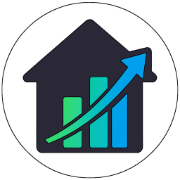Imagine you’re comparing two rental properties. Both generate $10,000 in annual profit after expenses. Property A costs $100,000, while Property B costs $200,000. Which is the better investment?
If you’re paying cash, the answer is clear: Property A gives you a 10% return ($10,000 ÷ $100,000), while Property B only delivers 5% ($10,000 ÷ $200,000). This is cap rate in action—it shows what you’d earn if you bought the property outright with no financing.
But what if you’re getting a mortgage? That’s where cash-on-cash return comes in. It tells you what you’re actually earning on the money you put down, after accounting for your monthly loan payments.
A real-world example
Let’s say you’re buying that $100,000 property (10% cap rate) with a $20,000 down payment and an $80,000 mortgage at 7% interest. Your monthly mortgage payment would be about $532.
- Annual mortgage payments: $6,384
- Cash flow after debt service: $10,000 - $6,384 = $3,616
- Cash-on-cash return: $3,616 ÷ $20,000 = 18.1%
Suddenly, your 10% cap rate property is delivering an 18% return on your actual invested capital. That’s the power of leverage—and why you need both metrics.
Which metric should you use when?
Use cap rate when:
- Comparing different properties on an “apples to apples” basis
- Evaluating if a property is fairly priced in the market
- You want to remove financing variables from your analysis
Think of cap rate as the property’s inherent earning power, regardless of how you pay for it.
Use cash-on-cash when:
- Deciding if a leveraged deal meets your personal return goals
- Comparing real estate to other investments you’re considering
- Planning your actual cash flow and returns
Cash-on-cash shows what’s really happening to your money after you factor in your loan.
Watch out for these common mistakes
The reserves trap: Many investors calculate cap rate using gross rental income minus basic expenses, forgetting about capital expenditure reserves. A “7% cap rate” property might only deliver 5% once you properly account for roof replacements, HVAC repairs, and other major maintenance. Always use realistic expense estimates.
The growth confusion: Cap rate is a snapshot of today’s income, not tomorrow’s potential. Don’t justify buying a 4% cap rate property in a hot market by assuming rents will double in five years. Growth is separate from current yield—treat them that way.
See the numbers for yourself
Want to see how these metrics play out with real numbers? Housalyzer’s calculators let you model different scenarios and watch how financing affects your returns:
Ready to crunch the numbers? Use Housalyzer’s Investment Property Calculator to see cap rate and cash-on-cash side by side with your actual deal parameters.
Pro tip: Run a sensitivity analysis by adjusting your interest rate up and down by 1%, and your down payment from 5% to 30%. You’ll see your cash-on-cash return swing dramatically while the cap rate stays constant—a perfect illustration of why you need both metrics in your toolkit.
Disclaimer: This is not financial advice. Always consult a qualified professional before making investment decisions.
